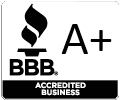
Depending on the consignment shop and the item being sold, the seller may concede 25% to 60% of the sales price in consignment fees. In addition to selling goods themselves, business entities sometimes find it more convenient and more profitable to market their products in multiple areas through agents. Try Unleashed for free today or book a demo to learn how we can help your business make light work of consignment inventory accounting and stock management. As you can see, using double-entry accounting is the easiest way to record these transactions. When you’re looking to do this in the easiest way possible, make sure that you use reliable accounting software.
Consignee sells the inventory journal entry
However, some companies may still choose to convert inventory from one account to another to keep their records organized. Consignment inventory accounting is problematic for both the consignor and the consignee. M/s Lall & Sons could not collect ` 11,000 due to insolvency of a customer.
Consignment Payment Structure
After the calendar year, the profit or loss on consignment accounts is ended by moving its amount to the General Profit & Loss Account. For example, Company A (consignor) has made an agreement with Company B (consignee). On 01 January 202X, Consignor has transferred an inventory of 10,000 units to the consignee, they cost $10 per unit and the selling price is $ 15 per unit. Company A agrees to pay the sale commission 10% on the sale made. Consignment businesses are one of the easiest businesses to start.
Optimise your consignment inventory control processes
When people hear the word consignment, they tend to think of consignment shops. Consignment items are brought to a place of business and sold on behalf of a person. However, consignment shops are not the only businesses that operate under this model.
Consignor Records the Consignment Cost of Goods Sold
When the consignee remits money, he sends Account sale to the consignor. The NET income of $2,450 represents the profit made by the consignor on this inventory consignment. For example, you should stipulate what commission, if any, the consignee will charge the consignor and irs tax rate schedules the intervals a consignee will make payments for sold inventory. Before you consider entering a consignment inventory arrangement, you should discuss and agree on the conditions. Your cash flow can become dependent on the speed at which the retailer can sell the goods.
- Normally, there is a specific consignment period that is established.
- In Consignment, goods are left in the hands of an authorized third party called the consignee for sale on behalf of the consignor.
- The individual selling the goods is the consignee, while the provider of the goods is the consignor.
- It also contains the quantitative details, apart from the financial transactions like Sales, Expenses incurred, Commission due & advances paid.
- Before you consider entering a consignment inventory arrangement, you should discuss and agree on the conditions.
Q.4 A Company consigned 200 boxes of ` 100 each at an invoice price of ` 120 per box. Agent received the consignment and paid ` 800 on carriage, ` 1000 on godown rent & charged 10% commission on sales. Under the consignment contract agreement the consignee is entitled to a commission of 700 (7,000 x 10%), and makes the following consignment accounting journal entry. As the expenses relate to the consignment and are a cost of bringing the inventory to its present location and condition, they are debited to the consignment inventory account. The credit entry as usual is either to accounts payable or cash depending on the terms agreed with the supplier. In Consignment, goods are left in the hands of an authorized third party called the consignee for sale on behalf of the consignor.
In addition to his sales commission, the consignee is also entitled to recover marketing, transportation and other expenses paid by him in respect of consignment business. Sometimes consignment is beneficial for both consignor and consignee as the consignor gets business expansion and the consignee gets commission and incentives without any investment. Hence, consignment can be a good business expansion option. Consignment accounting entries are a type of business arrangement in which the consignor sells goods to the consignee for exchange in return for the commission.
The consignment shop will generally take control of every aspect of marketing and presentation for a given product. This can mean that products are presented in a way that the owner or producer does not approve of. Sometimes, issues like this are covered in consignment agreements, but often selling on consignment means ceding a great deal of control to the consignment seller.

Consignment is a type of business model in which a legal owner of goods consigns his or her items to their representative for transportation, transfer, purchase, and so on. The consignee then provides an account sale to the consignor. This details revenue and expenses incurred on the sale of the goods. Then, the consignor will pay expenses for the goods to be shipped.
On receipt of the Account Sales Report from the consignee, the consignor completes the consignment accounting by accounting for the sales and expenses with the following bookkeeping entry. Both the owner and the agent maintain their own records, and the consignment accounting will be different for each party. The main points relating to consignment accounting and goods on consignment are best seen by way of an example. It is important to understand that the agent never owns the goods. To completely understand consignment accounting entries, it is vital to understand the common terms used in this domain of work.
Prepare the ledger accounts in the books of Pawan & Raman. Double Entry Bookkeeping is here to provide you with free online information to help you learn and understand bookkeeping and introductory accounting. If a consignee fails to perform his part of work or does not function as expected, the consignor may replace him by another consignee.






Post a Comment